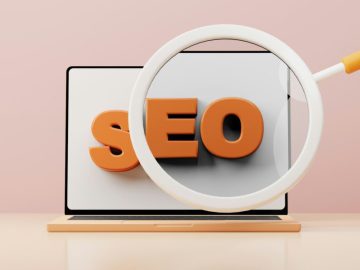Google’s Gary Illyes answered a question about the SEO value of hierarchically ordering heading elements (H1, H2, etc.). His answer offered an insight into the actual value of heading elements for digital marketing.
Heading Elements
In simple terms, HTML Elements are the building blocks of a web page and they all have their place much like the foundation and a roof of a home have their places in the overall structure.
Heading elements communicate the topic and subtopics of a web page and are literally a list of topics when a page is viewed just by their headings.
The World Wide Web Consortium (W3C), which defines HTML, describes headings like this:
“HTML defines six levels of headings. A heading element implies all the font changes, paragraph breaks before and after, and any white space necessary to render the heading. The heading elements are H1, H2, H3, H4, H5, and H6 with H1 being the highest (or most important) level and H6 the least.
Headers play a related role to lists in structuring documents, and it is common to number headers or to include a graphic that acts like a bullet in lists.”
Strictly speaking, it is absolutely correct to order headings according to their hierarchical structure.
What Google Says About Headings
The person asking the question commented that the SEO Starter Guide recommends using heading elements in “semantic” order for people who use screen readers (devices that translate text into spoken words) but that otherwise it’s not important for Google. The person asking the question wanted to know if the SEO Starter Guide was out of date because an SEO tool had a different recommendation.
Gary narrated the submitted question:
“I recently read on the SEO starter guide that “Having headings in semantic order is fantastic for screen readers, but from Google Search perspective, it doesn’t matter if you’re using them out of order.”
Is this correct because an SEO tool told me otherwise.”
It’s a good question because it makes sense to use heading elements in a way that shows the hierarchical importance of different sections of a web page, right?
Here’s Gary’s response:
“We update our documentation quite frequently to ensure that it’s always up to date. In fact the SEO starter guide was refreshed just a couple months back to ensure it’s still relevant, so what you read in the guide is as accurate as it can get.
Also, just because a non-Google tool tells you something is good or bad, that doesn’t make it relevant for Google; it may still be a good idea, just not necessarily relevant to Google.”
See also:
Is It Relevant For Google?
The official HTML standards are flexible about the use of headings.
Here’s what the standards say here:
“A heading element briefly describes the topic of the section it introduces. Heading information may be used by user agents, for example, to construct a table of contents for a document automatically.”
And here:
“The heading elements are H1, H2, H3, H4, H5, and H6 with H1 being the highest (or most important) level and H6 the least.”
The official HTML5 specifications for headings state that the hierarchical ordering is implied but that in both cases the headings communicate the start of a new section within a web page. Also, while the official standards encourage “nesting” headings for subtopics but that’s a “strong” encouragement and not a rigid rule.
“The first element of heading content in an element of sectioning content represents the heading for that section. Subsequent headings of equal or higher rank start new (implied) sections, headings of lower rank start implied subsections that are part of the previous one. In both cases, the element represents the heading of the implied section.
Sections may contain headings of any rank, but authors are strongly encouraged to either use only h1 elements, or to use elements of the appropriate rank for the section’s nesting level.”
That last part of the official standards is quite explicit that users are “encouraged” to only use H1 elements, which might sound crazy to some people, but that’s the reality. Still, that’s just an encouragement, not a rigid rule.
It’s only in the official HTML standards for heading elements in the context of accessibility that the recommendations are more rigid about using heading elements with a hierarchical structure (important to least important).
So as you can see, Google’s usage of heading elements appear to be in line with the official standards because the standards allow for deviation, except for accessibility reasons.
The SEO tool is correct that the proper use of heading elements is to put them into hierarchical order. But the tool is incorrect in saying that it’s better for SEO.
This means that H1 is the most important heading for screen readers but it’s not the most important for Google. When I was doing SEO in 2001, the H1 was the most important heading element. But that hasn’t been the case for decades.
For some reason, some SEO tools (and SEOs) still believe that H1 is the most important heading for Google. But that’s simply not correct.
Listen to the SEO Office Hours Podcast at the 13:17 minute mark:
See also:
Featured Image by Shutterstock/AlenD





